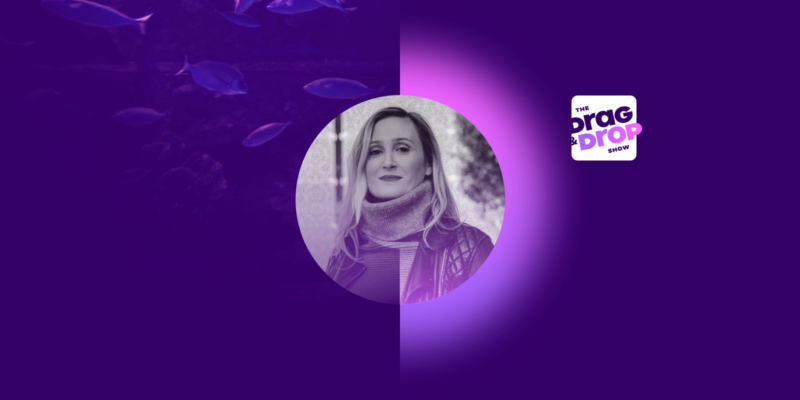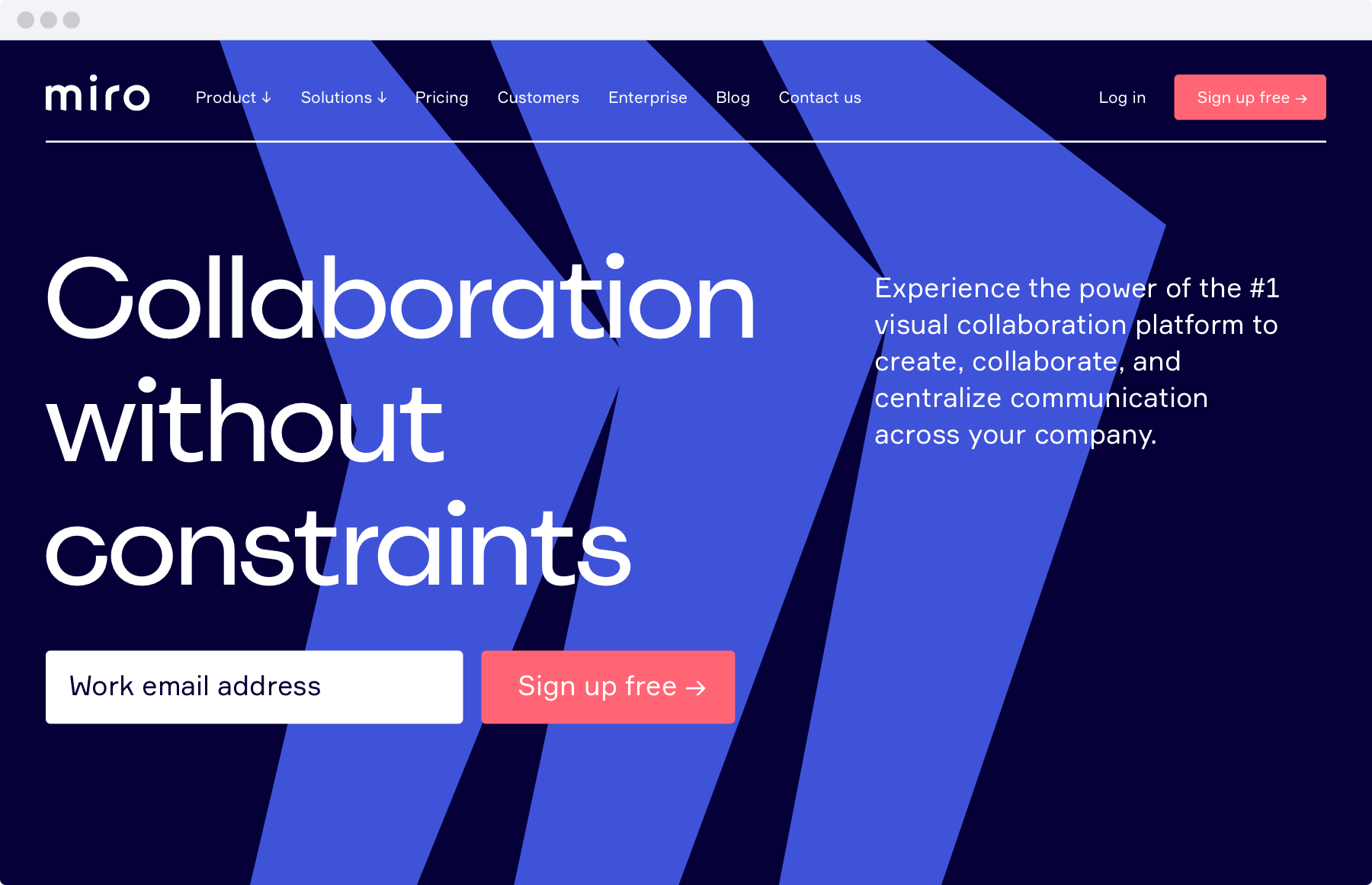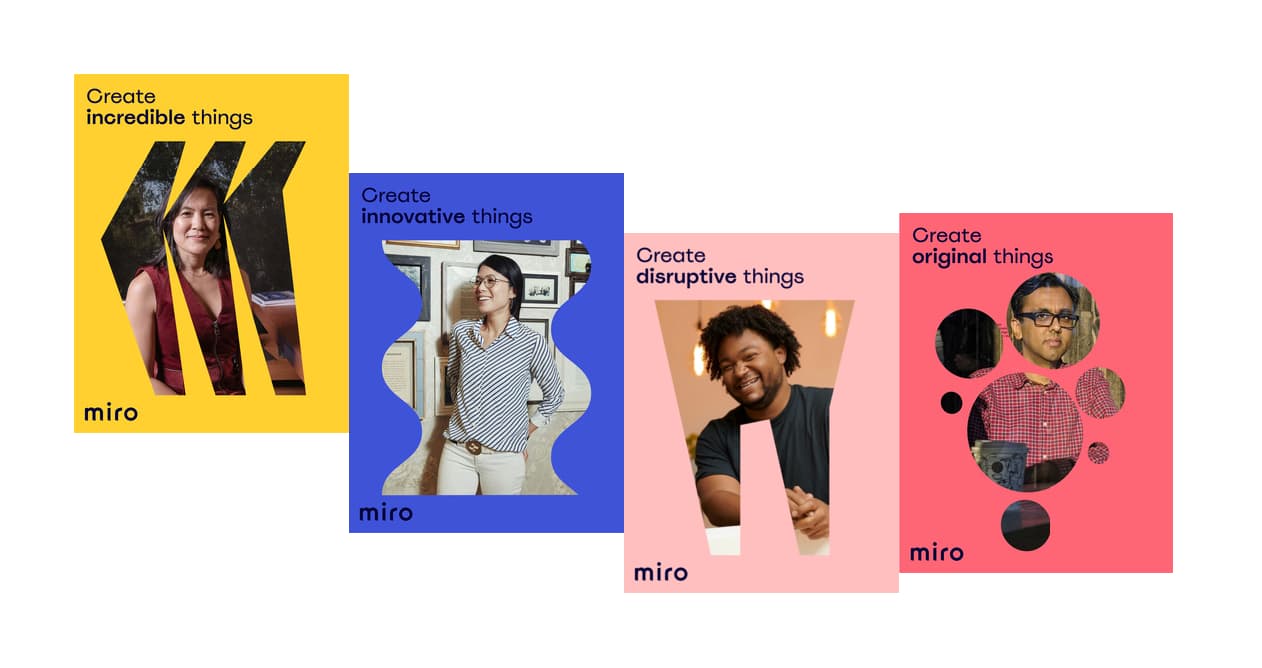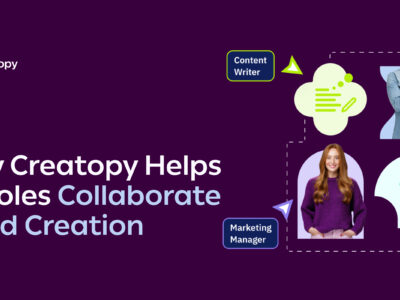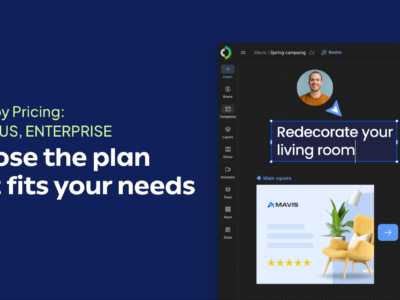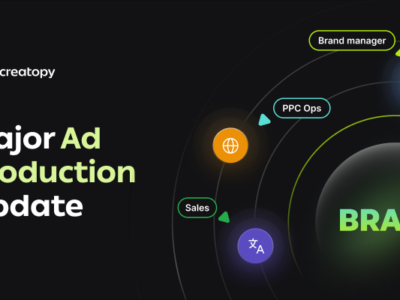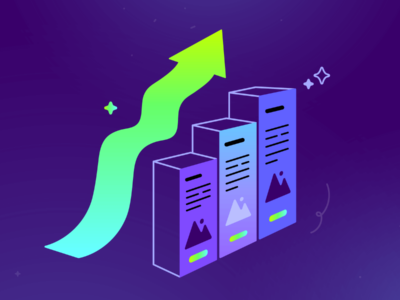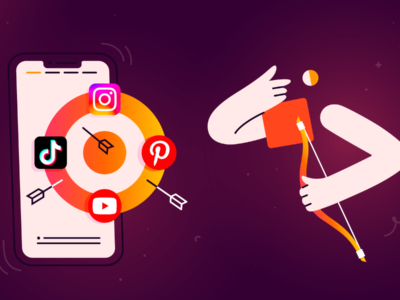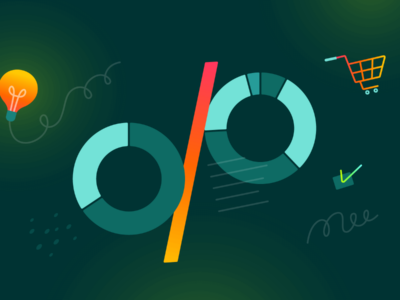There’s something to be said about being gutsy in marketing. With so many examples of impeccable instincts and flawless executions, it seems like being bold is a day-to-day occurrence (and requirement) of being a good marketer.
But do you know what does require a huge amount of courage and ownership? Taking on a rebrand of a company and product that has millions of users. Now that’s a bold move.
After all, we’re all chasing that rapid organic growth high. So what would it take to risk impeding its momentum? That’s what I wanted to find out during this talk with former Miro CMO and current founder and CEO of Pando, Barbra Gago.
During my conversations with people around rebrands for this season of the Drag & Drop Show and beyond, the Miro rebrand always gets referenced as a great example of what to do and how to do it, and as something that people will want to reference for years to come.
RealtimeBoard, as Miro was called at the time, was a company with over three million users that underwent a massive rebrand in just under four months. In this podcast episode, Barbra takes us through the experience and breaks down how the company pulled off such a massive rebrand on such a short deadline.
It’s a thought-provoking conversation that highlights different aspects of the rebranding process—from the team’s alignment and focus to engagement, differentiation, internal operations, business workflows, and more.
Let’s dive in!
Introducing Barbra Gago
An award-winning marketer and CMO turned entrepreneur, Barbra Gago is paving the way for a new way of building company culture. Beyond that, she’s one of the few marketers who truly understands how to make the most of every single team member’s contributions, while helping them as well.
Barbra has led marketing teams and driven growth and strategy for prominent tech companies such as Greenhouse.io, Miro, and most recently Pando, where she’s on a mission to bring equity, inclusion, and structure to how employees make progress in their careers.
In this episode, Barbra breaks down how the Miro rebrand came to be at the time of exponential growth, what role virtual branding sprints and cross-functional teams played, and how the lessons she’s learned have impacted her experience of founding a new company.
Stuff I Was Curious to Find Out:
- What the considerations and risks behind the brand name change were: the journey from literal and descriptive to abstract. (01:28)
- The ways they cultivated internal alignment on the new brand and how they used collaboration to cascade that alignment. (11:47)
- The essential skills, people, and relationships that make a massive rebrand like this work. (18:17)
- What unexpected benefits came from being transparent about the way they worked and everything they put into this process, during and after the rebrand. (28:24)
- How Barbra’s transition into her new role as the founder & CEO of Pando was the start of a personal rebranding and which lessons learned during the rebrand she carried into this new adventure. (33:13)
What You Can Learn From This Episode:
- How Barbra’s personal connection to the name change was the fundamental factor that led to the incredible brand Miro is today. (04:29)
- What it’s like working with a naming agency during a rebrand. (09:17)
- How a positive can-do attitude and a strong sense of ownership took the Miro rebrand from crazy and chaotic to a complete success. (22:00)
- What it’s like to grow a brand from ideation and early strategy to visuals and final product launch. (35:46)
- What fuels that sheer drive and determination that’s required to build a successful brand. (44:57)
Key Takeaways:
1. How to (re)name your product before or during a rebrand
Changing your company’s name isn’t easy, especially when you have so many people that have already built a relationship and created memories with your brand. But as difficult as it may seem, sometimes a new name is exactly what your brand needs to get where it needs to be.
Brand building can be a highly personal and emotional affair for everyone involved, no matter their role in the company. And reaching some degree of alignment and buy-in from the very start is a crucial step in keeping everyone comfortable during the entire experience. That unified support can do wonders, not just for a new name, but also the rebrand itself, and can help everybody who’s navigating that change.
Make keeping everybody on the same page a priority. Assist them in understanding and being able to tell the story about why you’re doing this, how you came to this new name, and what’s the story and context behind it. The (new) name can become the motivating factor your company needs to reinvent itself.
2. The more structure and transparency you create in the rebranding process, the easier it is
At times, rebranding can feel like you’re just going with the process and holding on for dear life. But, in the end, every rebrand evolves and becomes a growing experience when unwrapped. And not just for the company, but also for the community it’s serving.
The secret behind a seamless transition from one brand to its next iteration is a solid implementation of processes. With so many moving parts, a rebrand thrives under the guiding hand of structure.
Aside from your internal processes, make sure your partners can also adhere to or contribute their own. From the naming agency to the visual design studio, work together on implementing and aligning methodologies and values that make it easy to work together and collaborate on such an extensive project in a short period of time.
3. In order to attract customers, build a brand with customers in mind
This past year, in particular, customer-centricity has evolved as one of the most vital components for B2B branding. It helps brands expand their reach, proactively strengthens brand resonance, and creates a more seamless omnichannel brand experience.
This strategy to provide a seamless customer experience can and should be a starting point during your rebrand. You want to understand and assess the need for differentiation by engaging your audience in a people-focused way that goes beyond automation and the usual workings of the industry.
This is your chance to (re)create a brand that communicates in a way that really appeals to people’s true needs, that goes beyond customer personas, that has playfulness, surprise, humanity, and empathy. It’s brands like these that manage to actually respond to the high expectations we all have from companies nowadays.
Transcript:
Andra Zaharia: Barbra Gago is a force of nature. For brand building, experience marketing wit and business acumen combine to create industry-changing results. In this thought-provoking conversation, Barbra takes us through the experience of rebranding RealtimeBoard, the company with over 3 million users at the time in under four months. The Miro rebrand gets referenced in the industry as an example for good reason, as you’ll discover in this podcast episode. From virtual branding sprints to ownership and cross-functional teams, Barbra breaks down how the company pulled off such a massive rebrand on such a short deadline. We also take a look at the longer-term effects it had on the company culture, and what Barbra, now founder and CEO of Pando took from that transformative experience. She also shares the brand story behind her current company, and what they’re doing to build career frameworks that bring equity and inclusion to all employees. Barbra’s determination and her fierce focus on the human element make her not just a great brand builder, but also one of the people to watch and learn from, as you grow. It’s Andra Zaharia here, bringing you the latest episode of the Drag & Drop show, from Creatopy.
Andra Zaharia: So Barbra, I’m extremely excited and very grateful to be able to talk to you today. Thank you for taking the time to be on the Drag & Drop show and for sharing your experience in the Miro rebrand. It’s so, so good to have you. Now, there’s so much to unpack here. You have such a rich and diverse experience and you’ve accomplished so much before the Miro rebrand, but also ever since. So, I’d like to go a little deeper into your experience and dig into some specific aspects of this rebrand that complete the picture of what you’ve already published and wrote about this experience. And also, then, see what you’ve been up to since then, and how things have evolved. So could you tell me a little bit, by taking us back to the moment when Miro decided to rebrand, what were the considerations that you took into account before making that decision?
Barbra Gago: Sure. So, I think I’ll kind of start with my own sort of story grappling with joining the company that was named RealtimeBoard. Because as a marketer, obviously, the product is really important in terms of the community and how well is received, and if you have evangelists already, and what you can do with that, obviously, at scale, and kind of to build and grow that. And the brand is a big part, from my experience, in building really defensible sort of B2B brands, especially in spaces that have a lot of competition. And when I joined Miro – at the time, it was called RealtimeBoard – it was kind of an underground product that not a lot of people had heard about, it was a big company in Russia, actually in the middle of Russia, and not that known outside of it. And I saw so much potential in the product – I was blown away actually by what the team had done. And there were already evangelists. And I remember I was walking our dogs with my husband, and I was figuring out if I was going to join the company or not, and I was really worried about the name and if I can build, you know, a world-class brand and really elevate it to that scale with it being called RealtimeBoard. Like, it was so obvious and it was a very useful name; it had a lot of utility and the early customers liked it, and there were a lot of nicknames for it. And ultimately, you know, for me, it came down to whether or not I thought the founders and the founding team would be willing and flexible to change the name. And I figured, okay, they will be and that was one of the first things that we did, actually, when I joined.
Barbra Gago: So, for me personally, it was like a barrier, whether or not I was even going to join the company. And ultimately, I was confident that people would be into changing it and feeling that we had a huge opportunity to sort of build a brand that people can really love. I think the considerations from the team and myself just broadly was the founders and sort of the core team that was involved, like, it was really important… And it’s really important that founders and the people who really have influence at the company are committed and also see the value of what brand can do. If they aren’t, you’re gonna have a really hard time trying to change a brand or change a name. And the team was really, really supportive and motivated by the idea of being able to build a brand and build a company that people loved irrationally and, like, had an emotional connection to it, even as a B2B product. So I think mostly we were focused on how do we create that. And we had a lot of raw material that had a lot of potential. We really were focused on how can we create a name that helps us tell stories, and we really wanted it to be meta in the sense of, like, we wanted to tell the big brand story, but we also wanted to tell individual stories and we wanted those individual stories to be connected in this mosaic of what the brand was. And because Miro is, you know, a visual collaboration platform, we also felt that it was really important to be a very visual and engaging and just approachable brand. Those were all the big conceptual things, I would say. Obviously, there’s very practical things like the URL and getting a short URL, and thinking about the name and if the name is short, and does it make sense in various languages? The executive team at Miro, at the time, was distributed across Russia and the Netherlands, and the US. And when you’re changing a name and building a brand that’s going to be international, it’s really important that the name works in these places. And so, we had some funny experiences along the way, in terms of what different words meant in Russian versus English and things like that.
Andra Zaharia: Thank you so much for providing all that rich context for our conversation and for sharing that personal connection that you had, in the sense of, you know, it was kind of the fundamental factor that led you to have this experience and to build this incredible brand. How did you decide on the final naming? Who had the final say? Because finding a name like Miro, at this point in time, when all of the domain names are taken and startups are calling themselves names that are mostly made of consonants and that they’re impossible to spell or remember, so you just have to Google them just to make sure that you’re going towards the right website because otherwise, you’re going to end up on another side of the internet altogether. So, how was that process for you? You know, you shared about this cultural connotation. And ultimately, how long did it take you to settle on this name, and who had the final say on this?
Barbra Gago: I mean, our CEO, obviously, was kind of the last stamp of approval, which is to be expected, of course, with any startup. And I think that we did a really good job at collectively coming to the solution. The URL is kind of like a separate issue. So we knew that we wanted a name that was short and we wanted a URL that was easy, like SEO, and sort of Inbound is a big lead and revenue channel from URL, so that was really important that we were able to maintain this and even make it better. And it was an important factor but it wasn’t the main factor. Like, we really started first with the name and what was the name gonna be, and then figure out the URL. And also, then we did the whole sort of brand exploration as a second step.
Barbra Gago: And we actually worked with a naming agency, so it was a very contained process. And it was really cool the way that they did it because they essentially wanted to reduce consensus building in the process. And so, when we first kicked off the project, I hosted – for the team that was involved – a virtual brand sprint, and this really anchored everybody in what the expectations were, what our goals were, how the values were sort of aligned across the team – and that really helped to make sure that then in the process of naming and in the process rebranding, that we were actually already on the same page, which was really important, especially since you asked how long it took, and we had like three months, four months time horizon. And that’s because we were launching at South by Southwest in 2019, so we had a very specific date that everything needed to be done, and it was total chaos. I’m sure we’ll get into that in a minute.
Barbra Gago: But, yeah, we really started with the name first, went through a process where we were all interviewed, and we had already done that kind of pre-work alignment around what we wanted the brand to be. And then, that was kind of like an iterative process where they would interview us, present us names all independently – and there were six of us working on this together – and then, at the end, it would be like, “Okay, here’s the names, and here’s how they ranked.” And we wouldn’t know who picked what, which was really good because you don’t know what the CEO picked, or what I picked. It was like a blind sort of ranking. And ultimately, Miro was the name that everybody picked. So, in the end, it was like a really nice beautiful consensus, the kind that you want, because it was totally blind. And we had a shortlist but that was really everybody’s favorite. And then, there was so much to launch off on, of course, with him being an artist on the classic style, and sort of all of the things that we can sort of tie in with the brand based on him and his ideals sort of pushing the limits and boundaries. So it was a really good, fun process, and ultimately a really good exercise for the team.
Andra Zaharia: That is actually one of the first times that I’ve heard of this blind ranking process. So, it makes so much sense when you hear it and I’m sure that it all flowed beautifully and it relieved some of the tension because, obviously, there are always clashes between personal preferences and branding being such a personal thing – brand building being such a personal, emotional affair for everyone, no matter what the role is – it is, to me, one of the most challenging jobs that bring a lot of complexity where you have to pull together all of these different elements and then just pour it into this shape that, hopefully, lasts the test of time and grows and provides a foundation for the company and brings everyone together. So, obviously, there’s this entire emotional context around it. So, to me, that’s a super interesting process. And this cultural hook, this cultural anchor, I thought was extremely interesting and powerful around a brand name. And it gives you a space to be creative, to dream, and to have this creative outlet that you can use to just pour more of yourself into the company because this is something we all do but sometimes we don’t know exactly how to do it. We don’t know exactly how to harness these kinds of personal experiences and that more creative side of us. And the way that you did it, the way that you articulated this process sounds beautiful to me. So I’m very curious how the team reacted to this entire change. Because you talked about the alignment on a sea-level perspective and I’m curious how you cascaded that towards the team and how they felt about this change because, of course, at that stage, in the startups and in the company’s development, this appeals, you know, to a very specific audience in terms of naming, in terms of more descriptive names. So, moving from that to the next level, and expanding that scale brings some resistance, sometimes, in the way that the customers perceive it, but also internally. So how did the team feel about that? What was their reaction?
Barbra Gago: I think, with the process, we had at the executive level, kind of going through the naming, and then the creative aspect of the brand development, I think it’s an organic thing that you want to manifest its creativity. And we really wanted that to come to life but it’s really important to have a lot of structure to guide that process. I think that’s the most important thing – to get alignment and to get buy-in. And I think that that unified support for not just the fact that we were changing the name, but also the process, and it was very clear and structured, it helped everybody feel comfortable with the change and navigating that change. Obviously, we weren’t a small company. I mean, we were maybe 150 employees at the time, we already had 3 million users, it wasn’t super early. I mean, it’s definitely earlier than it is now; like, the customer base is much bigger, the employee base is much bigger now. But it was still a big shift, as you kind of noted, and a big change.
Barbra Gago: I think having everybody on the same page understanding and equally being able to sort of tell the story about why we’re doing this, tell the story about how we came to this name, what’s the story and context behind the name, it became sort of a motivating factor. And we actually kept the broader company pretty… Not involved, necessarily, but pretty aware of the steps and the process. Like, they knew the name, for example, before we did the brand exercise. So it was, like, everything was very iterative, and collaborative, and the team was sort of brought along. So, like, step by step, we unveiled the name and we talked about the process, and we told the story of why we chose this name and how it’s going to help us build a better brand. And then, we also had a lot of people involved because while we were doing the rebrand, the renaming, we also had planned for this launch at South by Southwest, which was in March and we started this process in November. So, it was like a pretty short end-to-end process where we had to have all of the brand, all the stuff done, and then manifest it into a 20 by 20 booth in a physical space. So, there were a lot of people involved and brought into the process, because we had all these parallel work streams happening. But I think ultimately, it was a really motivating and sort of inspiring thing that we were able to bring to the company and to the broader community. We did do some user testing, like, we reached out to users first about the name, and then we reached out to users about the logo, and then we showed them some of the visual styles and we just did some check-ins. And the same with the team. Like, we tried to bring them along in the process. And I think, ultimately, it was more of something that they could really see; wow, this will be like a world-class brand, this company will also be like a world-class company. And it’s definitely become that.
Andra Zaharia: And it feels like a self-fulfilling prophecy because you were already walking the talk, you were already doing the rebrand and just achieving everything that you achieved in the space of four months or less – it is absolutely insane and it’s awe-inspiring. There are companies who sit on rebrands and work on them for years.
Barbra Gago: Yeah.
Andra Zaharia: And you did a lot more work, a lot of extensive work in a very short time period. So, I’d love to know what kind of skills and what kind of behavioral traits made this possible as, again, Miro was at a point where… You know, RealtimeBoard was at a point where it was growing really fast, so you had to handle business as usual while doing everything else and preparing for a high-stakes launch at an event that you’ve already made quite an investment at so you wanted to make the most of it. Plus, it’s an opportunity to show up in the larger tech community and meet your customers with this revamped presence. And that’s kind of a foundational transformation. So straight to the core. So what would be the main roles and the main people who made this happen? And how did they manage to stay on track and focus so well, during this overwhelming process?
Barbra Gago: I think at the highest level, I was driving the initiative with our co-founders involved, our head of product, and our head of design. So, we kept the team that was really the core stakeholders pretty small. And in terms of attributes or behaviors, there was a full commitment from that team. I think I was the first executive coming from Silicon Valley and all of my counterparts at that point were in Russia. So, I was kind of like this crazy force that was making this huge thing, just like, “Okay, we’re doing this.” So I think, on one hand, it’s just kind of like there was a little bit of brute force. I think the more structure, the more transparency that you create in the process, the easier it is to brute force it because people don’t feel like they’re less behind and I think that’s really important. It’s really valuable to have all of those people on the same page and committed and bought in.
Barbra Gago: I think we also picked partners that had good processes. So, the naming agency that we worked with, their process, methodologies, and values were sort of aligned with ours as a company, so it made it easy to work together, easy to collaborate together in a short period of time. And we also broke that off and made that one thing that we were doing with them. It was like, we’re gonna do this one thing. They specialize in this and it was, like, a 12-week process, maybe to do the name. Or not. It wasn’t even 12 weeks. I think it was nine weeks or something like that. And then, in parallel, we were like, “Okay, who are we going to work with on the creative side?” And we did work with an agency. We didn’t just, like, throw it over the fence and hand it off to the agency. I had somebody on my team who was embedded in the agency’s workgroup, we were working with sprints with them – we were using Miro, obviously, and every week, we were doing sprints and doing reviews, which isn’t a normal agency working relationship; usually, they sort of drive the show and set the agenda and present things, etc. And this was something that our CEO felt pretty firmly about, and he was right. And with that kind of relationship that we had with the agency, it worked out really well because it was very iterative and transparent and we got it done quickly.
Barbra Gago: I think that there were so many moving parts, though. Like, I don’t know, when I look back, it’s like, “How did we even do this? It’s really, really crazy.” Especially in that period of time. But it was really just, like, to some extent, it really was brute force. We’re doing this, we have a deadline, that’s it. And all of the things have to happen. I remember we didn’t even have the URL secured yet – like, within days of the launch. We had to have the website transferred over, like all this stuff was in pending and it was just total chaos and craziness. But, you know, the core things were there in terms of what we were doing. And, you know, there was a lot of luck, I would say, because the fact that we were able to get the URL that we wanted – we did have to buy it and we used a broker, and we were sort of strategic about how we approached that. But still, you know, there was definitely luck involved for us. You know, there were a lot of URLs that needed to be changed, and the product redirects and legal. Like, we basically just had what we deemed sort of like a product owner for each of these main workstreams, so that they were held accountable and responsible. Like, I was ultimately responsible, but really, everybody had sort of ownership in their domain to make sure shit happened. And it did, and it was crazy and chaotic, but that’s also marketing.
Andra Zaharia: That is really true. And I feel like everything, you know, as you were telling the story and diving into the details, it feels like maybe a once-in-a-lifetime experience that sticks with you for the remainder of your professional and personal life because there was a lot of personal investment, obviously. And in pulling off something like this and then being comfortable with taking these risks, which are not easy to stomach by most people. Like, you mentioned the URL thing – you know, most people get intimidated about the idea of not losing SEO value.
Barbra Gago: I was just like, “It’s gonna happen. We’re gonna get it. It’s okay. It’s happening.”
Andra Zaharia: So that’s the positive ‘can do’ attitude that really helps a lot. So, it was definitely that ownership, cultivating it, and being able to walk the talk on this. And you have that very strong sense of ownership. It feels like it’s one of the most valuable things – probably even increased in value over the last year and a half – simply because we feel the need to work more independently and, at the same time, be able to infuse our creativity and kind of embed our vision into what we’re trying to achieve in any company we may work for. So, did you feel this was obviously an inflection point for the company itself? Did you feel that some of these practices stuck with the company after the rebrand? Did you integrate any of these approaches to working and to doing this important work into your workflow after rolling out the rebrand?
Barbra Gago: Oh, yeah, definitely. We did like a whole product positioning exercise. Like, I designed sort of like a design thinking model for how we were doing this and we had cross-functional teams between sales and customer success and marketing that were all working on a different persona or a different segment. We also did the distributed conference in 2019, in October that same year; after we launched at South by Southwest, we hosted the first huge, just virtual summit pre-COVID, but we already had 14,000 people attending that and we just went big. In terms of the structure, we had three days, three tracks, a lot of different speakers, interactive format. And yeah, we used a lot of the same practices and principles. Within marketing, we had these huddle boards, which were kind of like, for each team, you could go and see what the team was working on – we did that for events that we hosted, we also sponsored the Atlassian user conference. And similarly, it was a very big cross-functional team, which we gave a lot of ownership. There were team leads that were responsible for getting leads and team leads for doing this, and team leads for doing that, and we created a cross-functional team to attend the event that weren’t just marketing. And so, I think a lot of those initiatives were successful, too, because we were able to bring in other people, and it helps them understand marketing and the customers, that helps marketing and the marketing team understand more what their input and context is, as well. So yeah, I think, for sure, I know that a lot of the team that I hired at Miro is doing a lot of those practices today and continued to do the distributed conference last year, as well, which was again, huge, but that was actually during the pandemic.
Andra Zaharia: That really inspires me to see, you know, it’s nice to look back when you’re out of the weeds, when everything has kind of fallen into place, and see that these things stuck with people, and that they keep bringing value to the company.
Barbra Gago: Our customers were using it, too, because we published a lot of the stuff that we did internally in the templates library and made it available, and it’s really cool to see somebody else doing… I mean, we borrowed the Google Brands brand, but then we built a template in Miro, which then was accessible to the community, and that’s really cool to see the multitude or the compounding impact that those things have over time.
Andra Zaharia: To me, what you’re telling me and the entire story of the Miro rebrand was like an education for the internal team, and also to everyone who participated. And I’m sure that that includes external partners as well. They probably feel the same way if we’d asked them. And then it continued to be an education in the way that you decided to serve the community, which to me feels very generous. And it’s definitely very clear that the company really wants to talk on this rebrand because I’ve been watching what you’ve been doing ever since, I’ve been watching the type of communication that’s going on around the brand, and there’s so much consistency and clarity in everything, that the company keeps growing at quite a high pace and it’s nothing short of inspiring to see that. It’s a great lesson to learn from, too. So that’s why, you know, whenever I talk to people around rebrands for this podcast season, but also beyond this, the Miro rebrand always gets referenced as a great example, as something that people will want to reference because it’s so well done. So, you’re very transparent about communicating after the rebrand as well. Were there any unexpected benefits that came out of this? You know, just being transparent about the way that you worked on this and everything that you put into this process?
Barbra Gago: Yeah. I mean, I think it’s like those compounding effects. I think we, as a team, and sort of thinking about the brand, it was very much like we had an opportunity to kind of do all these things and set all of these best practices and really change the way that people work and how they communicate. And I think the whole visual nature of what Miro enables is really powerful – you know, like a picture says 1000 words – and like we were really focused, especially with distributed teams on creating this way for companies to find their common language, visually – and that could be different for every company. So I think the other big piece that has had a really strong compounding point, to your point, about how the brand continues to evolve, but really stay true to what was done is that, like, we really had a brand system that was designed and it was extremely thoughtful both with the group that was involved in inputs for the agency, and the agency partner that we worked with – our head of design, Vlad, had a lot of input and insight into that – and it really enabled the company to just grow limitlessly in terms of how the brand can evolve. Like, everything had a meaning and a purpose, each of the Miro characters. Like, there’s the regular logo, and then we have these characters, and those characters each have their own characteristic, like agility, or solidity that sort of looks like we have a circle, and we have this, and we have this, and we have that and those all become patterns, and those all become shapes, and there’s the different colors. And I think that it really became a platform for not just the company and not just the people within the company, but all of the customers to tell their stories, to share their best practices, to learn, to grow, and really give back to the community. So, I think it is sort of a once-in-a-lifetime opportunity. I’ve built other brands; Greenhouse is in the recruiting software space – another brand that I built that I also feel really strongly and happy and good about; also very community-oriented. I think you don’t get a chance to rename a company and rebrand it every time you’re the CMO, and especially a product like Miro. And again, I think the most important thing was the commitment of the team that we were doing this and alignment around the vision of what we wanted it to be. And then, you know, just going with the process and just holding on for dear life.
Andra Zaharia: It feels like the Miro rebrand came at such a right time. Although the context is obviously a little fraught, it came at the right time in the sense of that work that you put in, in that space, and the kind of work that Miro enables and supports is so abstract, and this really became very visible in the space that we operate in, throughout 2020 and beyond. So, the more people worked with abstract concepts, the more they needed a way to visually express or just give shape to their processes, their thoughts, their ideas, their projects – and being able to share them became such a necessity. And, you know, Miro became that platform for them that not only enables them to do the work, but it also inspires them and gives them the guidance and the structure that you were mentioning to be able to do that valuable work. So I think that Miro had – and obviously still has – an invaluable contribution to the community, being such a community-driven project itself. And here, obviously, it’s just part of the company’s history and you are part of the company’s history through all the work that you did and that doesn’t really happen very often. These kinds of moments and rebrands are a bit few and far in between even though we talk about branding a lot – and rebrands are usually presented from a very flashy perspective. But having the opportunity to dig into them, I saw what sits behind them – through this podcast – and obviously, every rebrand became and becomes a growing experience when unwrapped. And not just for the company but for the community it’s serving as well. So, just focusing a little bit on your personal experience after pulling off this massive, massive rebrand, after such an intense experience where you actually moved from that role and stepped into a new one as the founder and CEO of Pando. So, that was pretty awesome. Tell us a little bit more about that. Just a quick background and the story behind the name.
Barbra Gago: Well, I guess I’ll say I had already thought about the brand. It took me a while to come up with a name that also has a story – and the whole brand and positioning and visual style was done before I even started the product. Pando is the largest living organism on the planet. It’s in Utah, it’s like a grove of thousands of large trees – I think they’re called Quaking Aspens. They all share the same root system, which is why it’s considered a single organism. And Pando is a platform to help employees develop in their careers and help companies create the right structure to enable and empower employees to move forward on their own and know what they need to focus on and get structured, valuable feedback that’s measurable, so they know exactly where they’re at. And so, Pando is like a good… Well, there’s growth, and it’s trees, and there’s all the sort of natural organic obvious metaphor. But then, as a single organism, it’s kind of like the company as an organism, where everybody is supporting each other and connected, but everybody also grows at their own pace, which is one of the main things that we’re trying to help enable, and help companies do with progressions.
Barbra Gago: So, once I knew what I was doing with the product, I spent probably two months trying to figure out what the name was going to be and what the story behind the name was going to be. And then, we spent time, once I had that, figuring out, of course, what the visual aspect and all of that is going to look like. I mean, I think it’s really important – I said that at the beginning of the conversation but I think true, authentic brands really are a huge differentiator, and you have to have a good product, and you have to build a good community, and you have to do a lot of things. But like, a really good, strong, meaningful brand that has a soul connection with people is really like a defensible strategy for business. So, I think companies are getting that now in the B2B space. They’ve become more and more like, “Oh, we need to do brand.” But, you know, it’s kind of interesting, because, before marketing automation, I was more on the left-brain side of marketing. I got a degree in fashion, actually, so I have the creative side too, but it was more like I was a stylist and more on selling the things and positioning how we’re going to sell them. But, like, I got into the more technical side of marketing when marketing automation came into play in the mid-2000s, and that was very scientific. Like, you have these personas that are coming into the process, there’s all these stages, and how do you optimize the stages? We sort of over-indexed a B2B marketing for the scientific side and the revenue side, which is really important. But with that, we sort of lost the human aspect and the meaning, and I think, you know, these days, there’s just a different model for how companies are adopting products – and usually, that’s through their employees, and that’s just not going to fly with employees and they’ll just drop you and use something else. So you have to spend the time, you have to think about that, and it’s really a super important aspect of an early strategy, I think so. That’s why we focused on it before we even started building the product.
Andra Zaharia: I absolutely love every single word you said, especially because as we can see in the B2B space, not everyone works the same way. So, obviously, understanding and assessing the need for differentiation from helping people truly do meaningful work, and what you want Pando to convey – that humanity, that people-focused element that goes beyond automation and beyond the usual workings of the industry. I feel that, you know, even marketing automation, like you mentioned, has created, almost like PTSD for some customers; it’s become such a trigger for them because they know exactly what’s going to happen. So, your acumen to be able to create brands that communicate in a way that really appeals to people’s true needs that goes beyond customer personas, that has playfulness, and that humanity, that empathy, that’s so important at the end of the day. And a little bit of surprise along the way, too, because you don’t know exactly what’s going to happen when you generally interact with people who sit behind companies. I feel like that is such a difficult thing to master. And, to be able to just bring that into the company and truly embed it in the process, I feel that is a very advanced skill and it’s not something that you can entirely teach. It takes a certain kind of person, and the ability to be empathetic, and to resonate with these concepts, to be able to actually pull this off. So I love what you’re doing with the vision of your company. I think that it is so necessary, and so lacking in many parts of the world, that the way that you’re going about building your business is actually one of the few actually sustainable ways that you can do that, and truly build a culture that contributes to our personal and professional wellbeing and to the larger community as well. And I feel Pando serves all of these purposes. So I think that it’s brands like these that manage to actually respond to the high expectations that we all have from companies nowadays. And I see this in myself, I’m in this exact position as a consumer. So, thank you for sharing that much detail about the company and for putting the pieces of the puzzle together so we can see the bigger picture. It is so, so valuable to hear you talking about this. Did you feel like starting Pando was sort of a personal rebrand, or brand evolution in your journey of serving your customers?
Barbra Gago: I always wanted to build a company and be a CEO, so I think the rebranding hasn’t officially happened yet, because I haven’t really spent a lot of time promoting myself as a CEO, or what I’m doing, because we’re just, like, heads down building at this point. So, I think, for me, it’s like the accumulation of all the things, I think. At Miro, because I came from marketing people products, I spent a lot of time helping the company roll out greenhouse, what the recruiting process was gonna be – like me, and someone else that I have hired on my team who had also come from greenhouse, trained people on structured interviews, and we didn’t have a head of people yet, and I just realized that, you know, there was… Well, first I did spend a lot of time doing the leveling and the career frameworks for the company and we’ve been through that whole process and I sort of led that forward working cross-functionally with all the function heads, and this just became something that I really wanted to help solve. But yeah, for me, I think I can be uniquely positioned to be successful knowing and caring about brand as such an important integral part of building a successful company. But then, all of the work that I’ve done in my past has just put me in a good position to be able to hire and work with engineers and build a good product and, of course, have a good marketing sales team and all that. But I think, to me, it feels like the right sort of transition and more of what I ultimately wanted to do, and being a CMO and doing brand and doing all that was just kind of like my step stones.
Andra Zaharia: I really hope that everything that you’re doing now kind of plays into that vision that you have, and I hope you get to build it exactly how you envision it so you can help guide as many people as possible who need this kind of support throughout their careers, throughout their lives. Because I feel that this elevates the industry itself, it elevates our ability to achieve things and to do something meaningful and helpful for our communities and society at large. So, that’s a very ambitious and remarkable goal. And you’re definitely one of the people who are most suited to carry this forward and to accomplish this. So, just to round things up, before we wrap up, I wanted to ask you to just tell me what makes you exude so much optimism, and what fuels that sheer drive and determination that you have? What are you most excited about building or resolving next.
Barbra Gago: I mean, I’m super motivated and excited by… Like, we already have a handful of early customers, and I think Pando is a product like others that I have sort of brought to market before – Miro being a visual collaboration platform, but so much of our marketing and so much of our brand, and so much of the work that we did was more about educating the community on how to work better in this context and how to work with distributed teams and how to create alignment. And we had such an opportunity to lead people in the right direction. And the same thing at Greenhouse with structured recruiting and sort of elevating the entire industry to make the people department strategic and not reactive, and not just like, you know, “Here, go do this.” or “Fill these roles.” Like, they actually, through the work that we did, and other companies like Filteramp and other brands in the space really elevating this function. And with Pando, I’m back to the people space, which I really like. And, you know, our big-picture goal is really to get companies to forget about performance reviews, and have this continuous progression, and really enable companies and also people to have structure and metrics and measurement around their career development because it’s all so subjective. And when companies roll out career ladders, people are like, “Yay. Now what? How are we measuring this? And what are we doing?” And it’s supposed to be this continuous feedback and check-in, but it’s like, in the context of what and for what, like, where am I actually going? And so, this is like a huge paradigm shift that is not going to be like an overnight thing, but our early customers are fully on board with that shift and already were moving in that direction, just didn’t have the tool to help them. And so, I think I’m most excited about what the future will look like in terms of how companies are engaging with their employees around career development and progression and what that looks like, and how we can change it, essentially.
Andra Zaharia: I’m so excited to see what you do next, Barbra. Success stories coming to life from your work, learning from them, I feel like you’re paving the way for a new way of building company culture, and truly building it, and truly understanding how to make the most of everyone’s contributions while helping them as well. And, by creating this positive, self-reinforcing cycle that helps everyone in the company, I feel you’re setting an example that many, many other companies could use. I’m very grateful that we got to have this conversation. Thank you for being on the Drag & Drop show and for sharing your perspective, your experience, so we can learn from it, get inspired, and motivated. And obviously, I hope that we get to do this again, sometimes. Thank you so much.
Barbra Gago: Well, thanks so much for having me.
Andra Zaharia: Thanks for exploring another fascinating rebranding process with us. If you found it helpful, subscribe to the show in your favorite podcast app and leave us a review. Until next time, this is Andra Zaharia. Thanks for listening to the Drag & Drop show, by Creatopy.
Connect with Barbra:
Resources Mentioned in the Episode:
- Miro.com
- Article – Barbra Gago on rebranding a hypergrowth startup
- Article – RealtimeBoard is now Miro
- Website – Miro rebranding
- SXSW – South by Southwest Conference
- Distributed: A virtual conference hosted by Miro
- Atlassian Team Conference
- The Pando quaking aspen
- Greenhouse
Thanks For Tuning In
The Drag & Drop Show is an original series created by Creatopy.
Click here to give Creatopy a spin.
If you liked this episode, hit “Subscribe” to get notified of the latest episodes wherever you get your podcasts:

